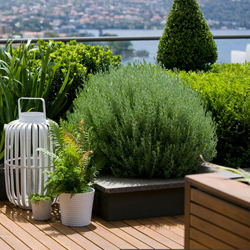Blog Post Title
Vestibulumaccumsan egestibulum eu justo convallis augue estas aenean elit intesque sed.


Besides the decorative benefit, roof plantings may provide food, temperature control, hydrological benefits, architectural enhancement, habitats or corridors for wildlife, and recreational opportunities. The practice of cultivating food on the rooftop of buildings is sometimes referred to as rooftop farming.
Roof gardens are most often found in urban environments. Plants have the ability to reduce the overall heat absorption of the building which then reduces energy consumption. "The primary cause of heat build-up in cities is insolation, the absorption of solar radiation by roads and buildings in the city and the storage of this heat in the building material and its subsequent re-radiation. Plant surfaces however, as a result of transpiration, do not rise more than 4�5 �C above the ambient and are sometimes cooler." This then translates into a cooling of the environment between 3.6 and 11.3 degrees Celsius (6.5 and 20.3 �F), depending on the area on earth (in hotter areas, the environmental temperature will cool more)

TYPES OF GREEN ROOFS
01)Intensive Roof Gardens
These gardens are developed to be accessible and may involve elaborate landscaping requirements such as water features and hardscapes including paving stones and seating. They are usually heavy in loading and the roof must be specially designed to accommodate such requirement.
02)Extensive Roof Gardens
Extensive green roofs are lightweight in design and developed mainly for aesthetic and environmental/ ecological benefits. The planting medium consists mainly of volcanic stones and pumice and the average
Thickness is about 10-15 cms